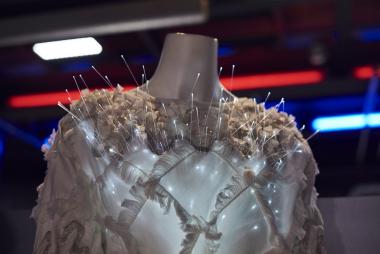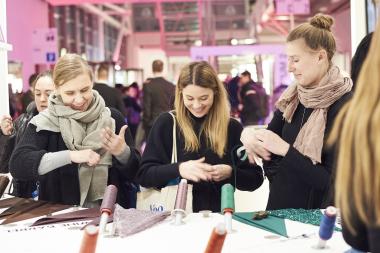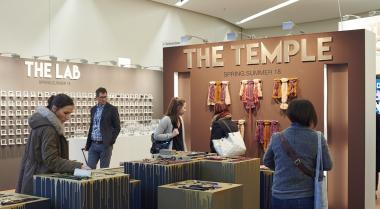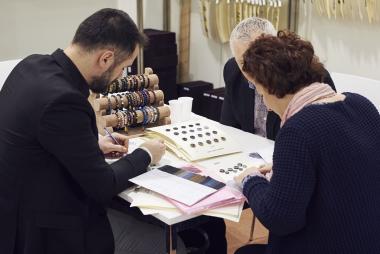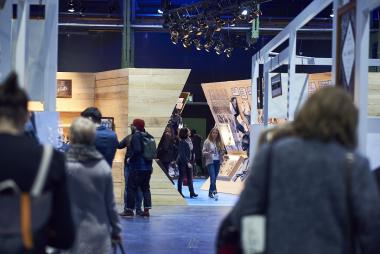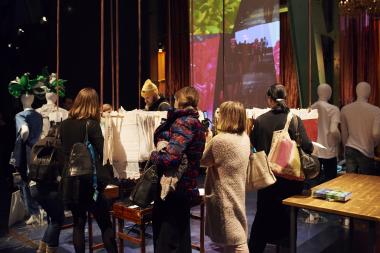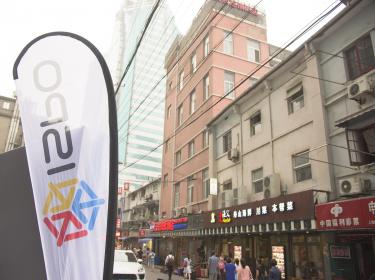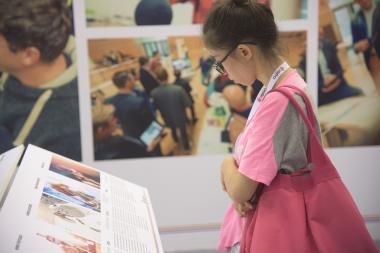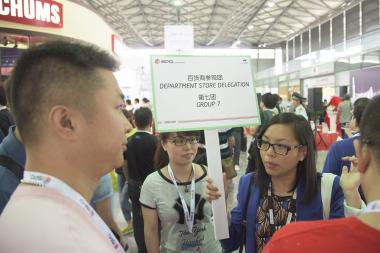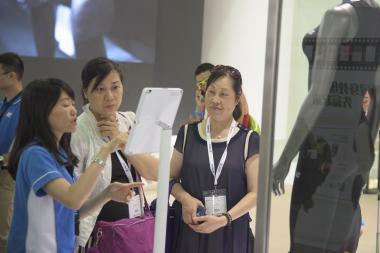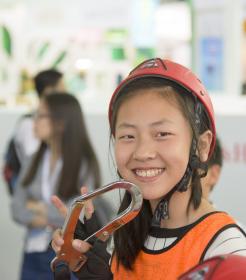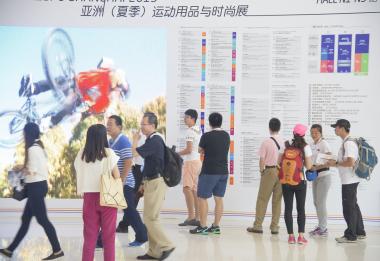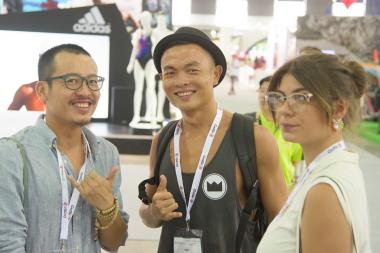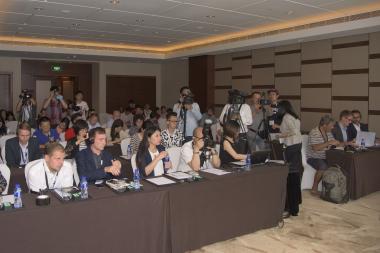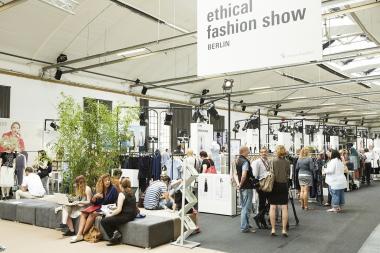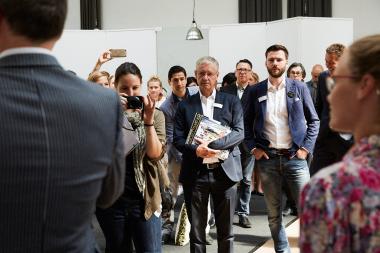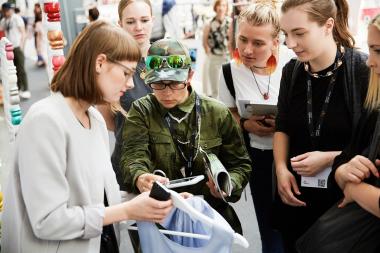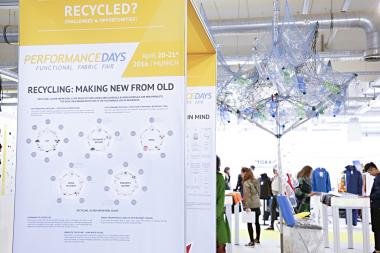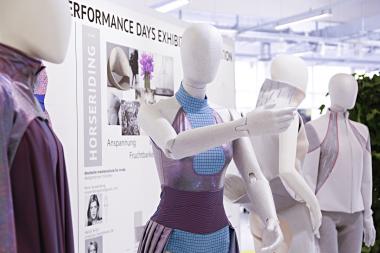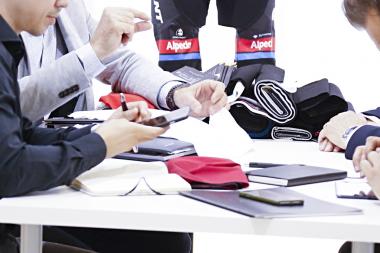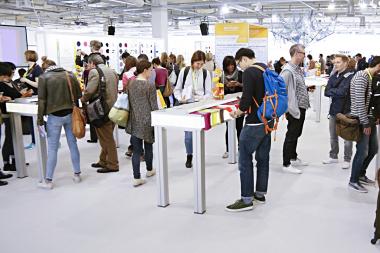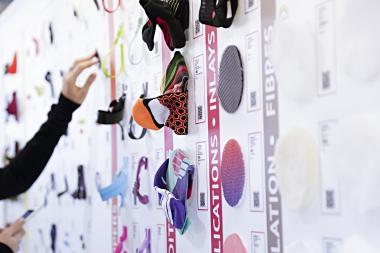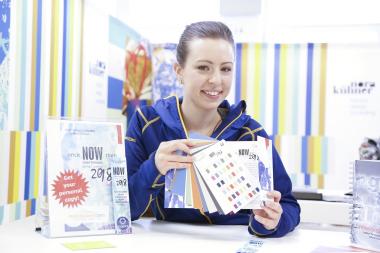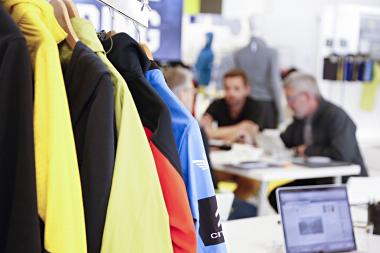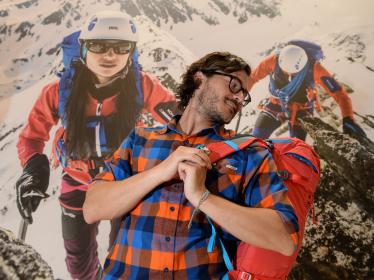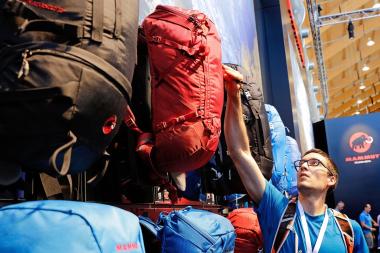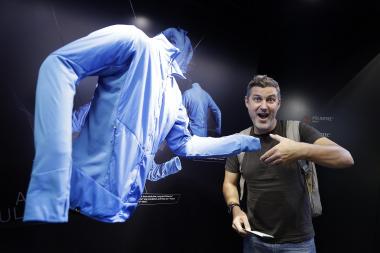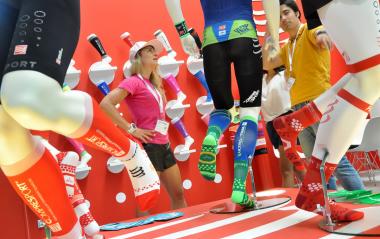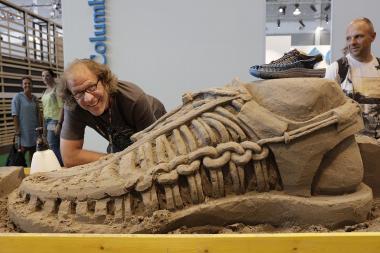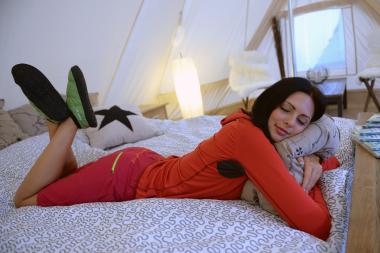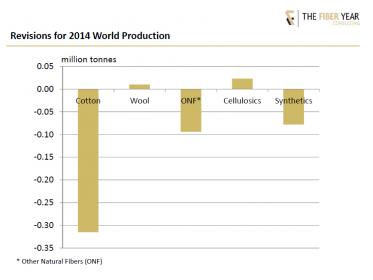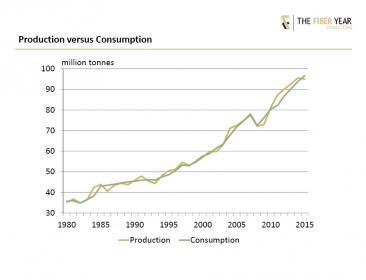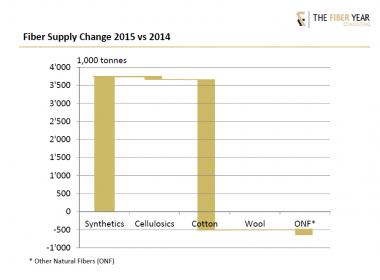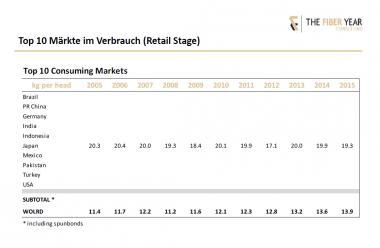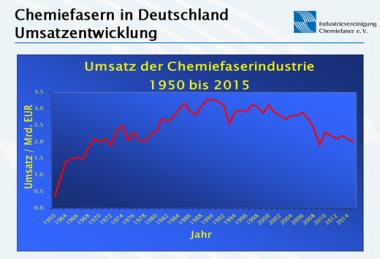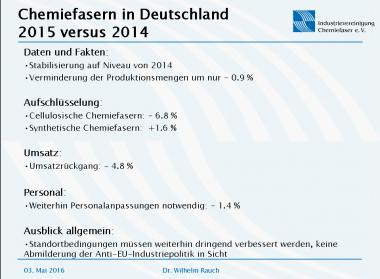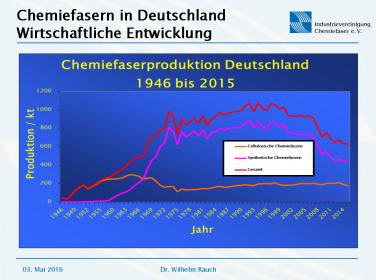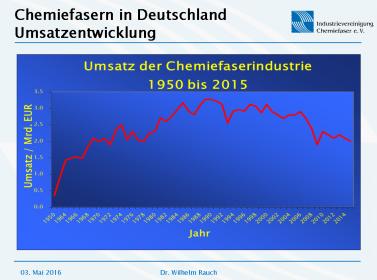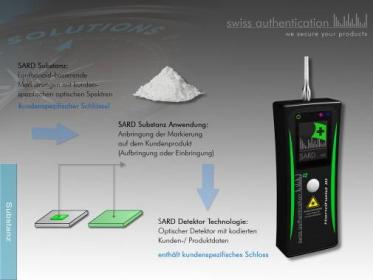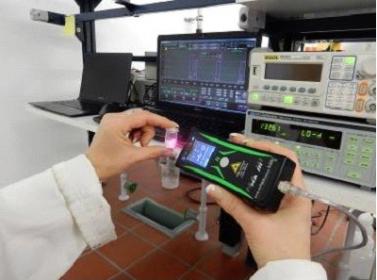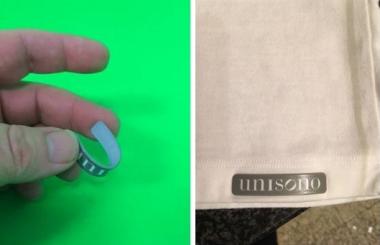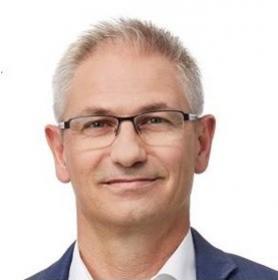CENTRAL AMERICA IMPORTS MORE TEXTILE MACHINERY
- Large-scale projects in Honduras
- More vertical integration strived
Following the US President's decree against the Pacific Pact TPP, Central America's textile and clothing industry counts for its main market on further tariff advantages compared to the Asian competition. Next to the so far dominating subcontracting work the sector wants to intensify the production of pre-products, what requires more and better textile machinery for this purpose. Guatemala is already investing, while Nicaragua will continue to stay mainly with sewing and tailoring. The largest technology market was lately El Salvador.
Honduras wants to expand its textile and clothing industry strongly. The aim of the "20/20" program is to significantly increase exports and with it new jobs. One focus should be the production of sportswear and other synthetic clothing, including pre-products. Central America's "largest factory for polyester yarn" (DTY) went into construction at the end of January 2017 in Choloma. It is expected to cost USD 73 million and produce 25,000 tons per year. According to Mario Canahuati, a Honduran shareholder of the investor United Textiles of America, an additional USD 120 million factory for synthetic materials and garments should be added later.
Observers believe the sector's expansion plans are realistic because it can stem the relatively large investment in the synthetic fiber production. In the Honduran textile industry there are many joint ventures with US partners which can raise capital in North America. In the other countries of the region the sector companies are more strongly medium-sized. They are depending more on the local capital market with its high interest rates and restrictive banks.
Honduras, Guatemala and El Salvador invest
According to a machine representative the textile manufacturers in Guatemala will invest more in dyeing machines in order to become more independent from suppliers and keep the quality better under control. According to Invest in Guatemala the sector there delivers higher quality end products than the competition from El Salvador and Honduras, on the US market clothing from Guatemalan is almost twice as expensive.
The textile industry in Guatemala and El Salvador is more vertically integrated than in Honduras: it produces relatively quite a lot of yarn and fabrics by itself and is less dependent of the typical subcontracting (Maquila) method, which only imports textiles and re-exports them as finished clothing. Honduras mainly processes imported synthetic fiber yarns, which the country - like El Salvador - manufactures partly by itself.
The best market in Central America for a large German textile machine manufacturer is currently El Salvador, which imports the most technology in the region. The customers are quite innovative and work more concept orientated, which makes the cooperation easier. Due to increased yarn prices, some weaving companies are currently investing in spinning machines, a machinery salesman says. According to the Central America Strategic Sourcing Review, more than 20% of the factories are "vertically integrated".
In the opinion of machine representatives, Nicaragua is still concentrating on subcontracting. Investors are reluctant to spend larger sums which would be needed for modern textile manufacturing. In addition there is a lack of good specialists for the foreseeable future, the level of training is only sufficient for easier sewing and clothing manufacturing. In Panama the textile industry does not play a nameable role; in Costa Rica, which is also relatively prosperous, the sector is larger, but exports little.
Central America’s textile and clothing industry
| Indicator | Guatemala | Honduras | El Salvador | Nicaragua |
| Number of manufacturers | 215 | 125 (2015) |
n.a. | n.a. |
| Employees (direct) | 90,000 (2013) | 99,100 (2015) |
75,000 (estimation) |
70,000 (estimation, 2014) |
| Clothing exports to the USA (2016, bn. US$) *) |
1,380 | 2,554 | 1,941 | 1,472 |
| Production of synthetic fibres (2016, 1,000 t) |
0 | 26,5 | 17,2 | 0 |
| Installed capacity (2015, 1,000 Units) | ||||
| Spindles | 153 | n.a. | 250 | 40 |
| OE-Rotors | 21 | n.a. | 1.4 | n.a. |
| Weaving looms | 3.9 | n.a. | 3.2 | 0.65 |
*) Costa Rica 29 Mio.; Clothing = almost total industry exports; 80% of exports are for the US; data from US import authority. Source: ITMF; national associations and authorities; Press
Central America Textile companies are usually located in a free zone and produce for export, mainly the US. In Honduras, according to a study by the Central Bank, Maquila - with textile / clothing as the largest segment - produced 36% of pre-products for other contractors and 64% of final products, which in turn were exported up to 99%.
US protectionism could even help
The protectionism, which is announced in the main market USA, develops some optimism to Central America's textile industry. As listed in “Honduras 20/20” it now can deliver more cheaply to the US than the competition from China or Vietnam because of existing trade agreements. At an - now not targeted anymore - omission of cutting US customs duties for Vietnam, it would be much more expensive. In addition, a garment factory in Honduras is able to deliver to the US in two days, a delivery from Vietnam requires twenty days. In the today so very fast fashion world, this is the main reason why Wal-Mart & Co. are ordering massive masses in Central America.
Until now, Central America has been supplying mainly cheap clothing for the US mass market, but, as a German machinery exporter is hoping, they will try to settle themselves against the Asian competition with higher valuable goods. For this the Central American manufacturers would need better technology, which preferable comes from Europe. In the view of other representatives Central America will need in future productive machines that are cheap at the same time. Chinese machines with European components are a big competition.
Machinery imports rising
Central America Imports of textile machinery and sewing machines have risen by one-third to over USD 130 million between 2013 and 2015. In addition, according to the International Textile Manufacturers Federation (ITMF), Honduras has imported 170 round knitting machines in 2014 and 2015, Guatemala only 26, El Salvador 23 and Nicaragua ten. Germany was the fifth most important delivery country. Leading supplier was the USA. For Guatemala, with its many Korean-owned textile companies, Korea (Rep) was the main supplier.According to ITMF, Central America will shift its investments somewhat away from the clothing area towards the textile sector. Already today, the representative of a German manufacturer says: "We are currently selling very well in Mexico and Central America."
Central America‘s1) imports of textile machinery (bn. US$) 2)
| SITC | Product group /Country / Country of delivery | 2013 | 2014 | 2015 | 20163) |
| total | 97.5 | 116.0 | 131.6 | 70.8 | |
| 72472) | Machines for washing, drying, dying a.o. | 25.7 | 27.9 | 35.4 | 9.4 |
| 724.35 | Other sewing machines | 21.0 | 24.2 | 29.2 | 18.8 |
| 7245 | Weaving looms and knitting machines | 21.7 | 23.7 | 28.8 | 20.9 |
| 7244 | Spinning machines | 11.5 | 21.7 | 19.8 | 11.6 |
| 7246 | Auxiliary machines | 14.4 | 12.8 | 13.8 | 8.1 |
| 72492) | Parts | 3.1 | 5.7 | 4.6 | 2.0 |
| USA | 32.5 | 33.4 | 27.9 | 12.7 | |
| Italy | 8.8 | 10.6 | 20.8 | 17.5 | |
| China | 9.1 | 12.1 | 15.4 | 6.6 | |
| Korea (Rep.) | 6.2 | 9.5 | 12.1 | 0.5 | |
| Germany | 9.6 | 4.0 | 10.9 | 6.9 | |
| Japan | 3.9 | 7.2 | 7.7 | 6.0 | |
| El Salvador | 48.5 | 55.4 | 70.9 | 70.8 | |
| 724.35 | 12.9 | 16.4 | 20.5 | 18.8 | |
| 7245 | 7.0 | 11.7 | 16.1 | 20.9 | |
| 72472) | 11.3 | 12.0 | 12.9 | 9.4 | |
| 7244 | 6.5 | 5.1 | 11.2 | 11.6 | |
| 7246 | 9.4 | 8.6 | 7.9 | 8.1 | |
| Guatemala | 28.9 | 32.6 | 44.8 | n.a | |
| 72472) | 5.3 | 6.2 | 12.4 | n.a. | |
| 7245 | 8.9 | 8.3 | 11.2 | n.a | |
| 7244 | 3.5 | 4.9 | 7.2 | n.a | |
| 724.35 | 5.8 | 5.9 | 6.8 | n.a | |
| 7246 | 4.4 | 3.7 | 5.5 | n.a | |
| Costa Rica | 13.9 | 21.3 | 10.2 | n.a | |
| 72472) | 5.2 | 5.0 | 5.7 | n.a | |
| 7244 | 1.4 | 11.4 | 1.3 | n.a | |
| 7245 | 5.1 | 3.0 | 1.2 | n.a | |
| 724.35 | 1.4 | 1.2 | 1.2 | n.a | |
| Panama | 6.1 | 6.8 | 5.8 | n.a | |
| 72472) | 4.0 | 4.7 | 4.3 | n.a |
1) without Honduras and Nicaragua; 2) SITC 724, without household sewing machines, (724.33), household washing machines, (724.71), machines for dry-cleaning(724.72), leather machines(7248), parts for household washing machines; 3) El Salvador only
Source: UN Comtrade
Quelle: Ulrich Binkert, Germany Trade & Invest www.gtai.de


